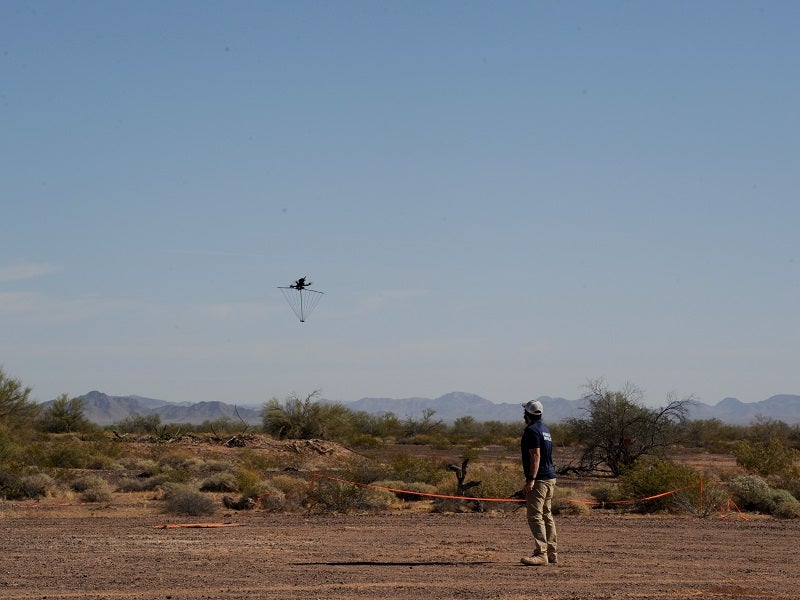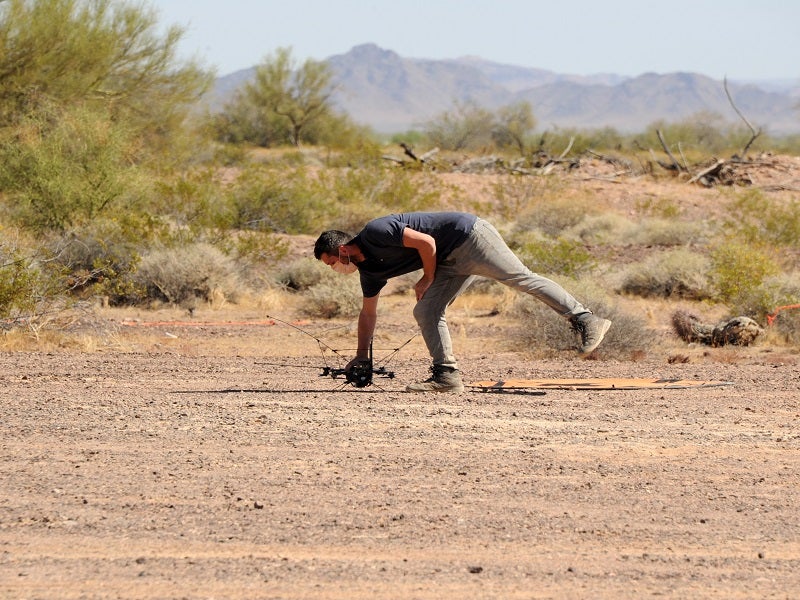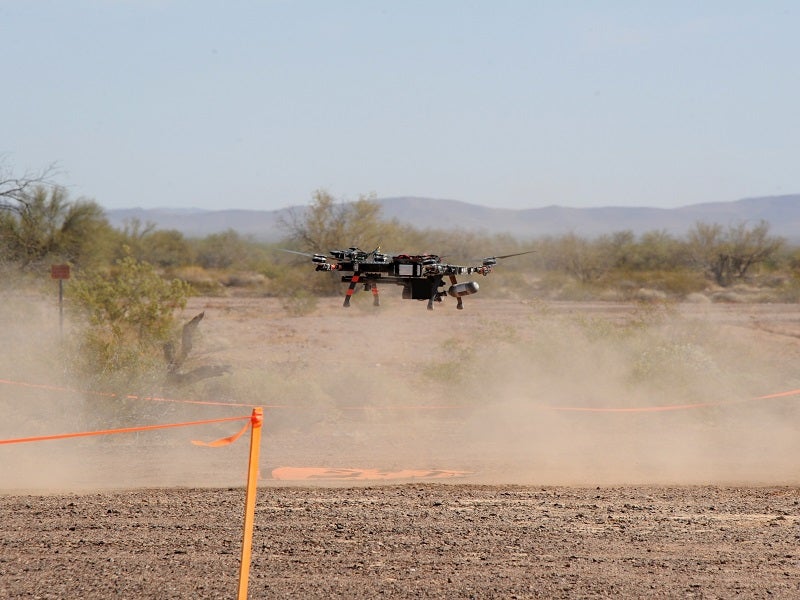Skylord Griffon is a counter-unmanned aircraft system (C-UAS) manufactured by human-guided autonomous drone systems developer Xtend to defend and destroy small drones.
The vertical take-off and landing (VTOL) counter-drone system is operational with the US Army Special Operations Command (USASOC).
US DoD’s counter-small UAS (C-sUAS) strategy
The US Department of Defense (DoD) appointed the US Army as the executive agent to supervise all C-sUAS programmes, in 2019. The Secretary of the US Army further established the Joint C-sUAS Office (JCO) to monitor and control all counter-drone efforts across the DoD, in February 2020.
The DoD has allocated $404m and $83m for C-UAS research and development (R&D) and procurement respectively for the 2021 fiscal year.
The US Army conducted a week-long C-sUAS demonstration at the Yuma Proving Ground (YPG) in April 2021. The activity evaluated the advanced drone-busting technologies in a low collateral effects interceptor assessment.
The prime objective of the demonstration was to test capabilities that can counter and defeat Class 1 and 2 UAVs or lightweight drones that are easy and inexpensive to acquire and difficult to detect and intercept.
The Skylord Griffon, Elta North America’s Drone Kill Drone (DKD), and Aurora Flight Sciences’ Modular Intercept Drone Avionics Set (MIDAS) participated in the test at YPG.
Design and features of Skylord Griffon
The 0.9kg quadcopter is designed as a wearable, lightweight system that can be operated with a single hand using a natural hand gesture-based controller. The aircraft’s frame features four arms, each mounted with a three-bladed propeller.
The unmanned aircraft has a modular architecture integrating complementary metal-oxide semiconductor (CMOS) and starlight sensors. It can be configured and optimised for multi-rotor interception. The Skylord Griffon intercepts the enemy drones by using expendable, disposable physical effector that detaches upon the impact of interception.
The counter-drone system can be piloted by operators with zero flight experience to kinetically intercept the aerial threat.
Technology used in Skylord Griffon
The advanced virtual reality (VR) and sensor fusion technologies used by the C-UAS allow operators to control a drone team through immersive 3D vision and semi-automatic interception mechanism, allowing the launch of drone swarms automatically upon detection of threats.
The unmanned aircraft employs a single-use net (effector) to intercept a target within seconds of threat recognition. The drone uses Xtend’s patented Mark and Fly technology, which provides operators superior situational awareness for better tactical decision-making during the flight.
The human-guided autonomous drone operating system of Griffon has a dynamic payload application programming interface (API) that supports the addition of multiple physical payloads and data connectivity, which transform the platform into multi-role toolsets for different situations. The robust and distributed operating system architecture enables integration with multiple aerial and non-aerial platforms with minimal configuration efforts.
Skylord’s API also supports the usage of real-time augmented reality 3D graphics from various external data sources. The machine learning-based sensor controllers ensure high accuracy when flying in difficult environments.
Command and control
The C-UAS is operated and controlled by a handheld joystick that can sense natural human movements to control the aircraft. The joystick has six degrees of freedom (DOF).
The feed from the C-UAS’ camera can be viewed by the commander on an immersive VR display for situational awareness.
The counter-drone system can be easily integrated with multiple AI applications and control software through APIs.
The unmanned aircraft can be piloted in six different flight modes, namely auto-take-off and landing, hold position, patented Mark and Fly, auto return home, waypoint missions, and fail-safe mode.
Propulsion and performance of Skylord Griffon
The Skylord Griffon C-UAS is an all-electric aircraft that can defeat small Class 1 and 2 drones or remote-controlled model aircraft (RCMA) within the distance of 4.8km from the launch point.
The flight endurance of the drone is up to 12 minutes and the maximum speed is 128.7km/h. The drone can carry a maximum payload of 0.5kg (1.1lb).
The C-UAS has an operational temperature range between -10°C and 50°C, while it can resist a maximum wind speed of 25kt and winds with gusts of 15kt.






